
Review on 🏠 Enhance Home Connectivity with Linksys WHW0102 Velop Mesh Router | 2-Pack/ White by Gene Taylor

good layout but not strong enough. Return.
so here is the situation: apartment on the 2nd floor. Concrete floor 3.5 inches. I've configured and deleted many routers in the past (probably dozens). Configuration was easy: download the liksys app. Create a Linksys account, define some parameters and the node will boot up. Each node's reboot time is twice that of a standard router, but I don't count this as there are only a few times you actually need to reboot the router. The good part is over. So: I placed 1 node on the upper floor (next to the cable modem above) and the 2nd node on the ground floor of the apartment. Distance between nodes: 6.5 feet (yes, less than 7 feet). The Node2 indicator status is red, which means the slave node can barely "see” the master node. So downstairs I have the illusion of a full Wi-Fi signal, but I can't stream decently (speed test: 5-7Mbps). I did some testing and tried to tweak the node layout based on the Linksys documentation. The distance between nodes was always less than 10 feet. Near node 1 with my internet plan (I only have a 40Mbps plan): I get full bandwidth. on the ground floor (directly below) node 1 (when node 2 is down): I only get 15% throughput. If I include node2 it goes even lower. I don't like the fact that I have to sign up with a Linksys account (I already have a linksys.com account, but that doesn't work with a Velop account - you see.) If I wanted to sign up, I would I buy Google WiFi, but that's just a small flaw. The biggest disappointment with this system is the poor mesh performance. So I only recommend this setting for tech newbies who have really thin wooden walls. Everyone else: (brick or concrete walls + corners) look for another MU-MIMO solution. Luckily I kept my old setup: an old (dual-band) Linksys E3200 router (upstairs) and a small repeater (Xiaomi Wifi Mini Youth downstairs). stick, that's a $15 hotspot). This setup gives me better coverage and throughput than this dual band Velop mesh system. With the E3200 I get (at the same points): 20Mbps (which means 50% of my bandwidth) compared to 4-5Mbps with the Velop. This package will be returned. For $200 you can buy a good tri-band MU-MIMO router that will outperform this setup. Can I hear the Netgear Nighthawk in the crowd? or even buy two $100 routers and connect them. I love Linksys products. In most cases they are reliable, stable and programmable! (I really like the tomato firmware). I've loved them since the early days of the Linksys WRT-54G. I know that Linksys also offers the same package, but with a tri-band, but a bit more expensive, but after seeing the current performance I won't even test it. Tri-band uses the 3.5 GHz band for communication and will not penetrate concrete any better. Maybe the mesh wasn't designed for a cramped apartment like mine (1000 square feet). Update: August 2, 2018: I ended up buying a UAP-AC-Lite Universal Access Point. This device works as promised. Download speed tests show 87% of my theoretical maximum .A+ for Ubiquiti for the Grid solution.
- A sea of positive emotions
- I don't like it very much, everything is fine
New products
Comments (0)
Top products in 🏠 Whole Home & Mesh Wi-Fi Systems
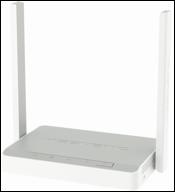
Wi-Fi router Keenetic Air (KN-1613), white/grey

26 Review
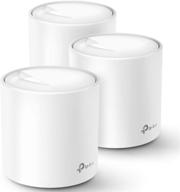
Get Superior WiFi Coverage with TP-Link Deco X20 Mesh System 📶 - Covers 5800 Sq.Ft, 6 Ethernet Ports, Wired Ethernet Backhaul Supported (3-Pack)

19 Review

Signal amplifier Tenda nova MW6-3 AC1200 Home Mesh WiFi system with 2 Gigabit ports. By

20 Review
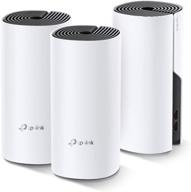
Experience Seamless WiFi with TP-Link Deco Whole Home Mesh System - 📶 Covering 5,500 Sq.ft with Parental Controls, Alexa compatibility & Gigabit Ports (Deco M4 3-Pack)

24 Review
Another interesting products
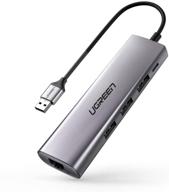
UGREEN USB 3.0 Ethernet Adapter Hub with RJ45: Fast Gigabit Ethernet Converter, 3 Ports USB 3.0 Hub Compatible for MacBook, iMac, Surface Pro, Chromebook, Laptop, PC

11 Review
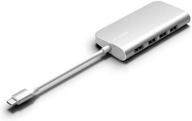
🔌 Juiced Systems Silver BizHUB USB-C Multiport Gigabit HDMI Hub with 3 USB 3.0 Ports, Gigabit Ethernet, 4K HDMI, SD/Micro SD, and USB-C Power Delivery

11 Review
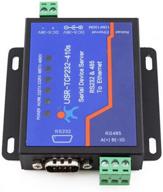
🔌 USR-TCP232-410s: RS232/RS485 Serial to Ethernet Adapter/IP Device Server with DHCP/DNS Support

4 Review
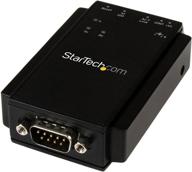
🔌 StarTech.com NETRS232 Serial to IP Ethernet Device Server - DIN Rail Mountable - Serial Device Server - Serial Over IP Device Server (Black)

4 Review

